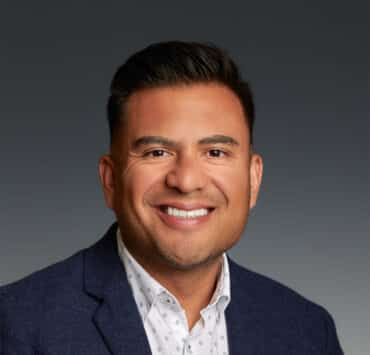|
Getting your Trinity Audio player ready...
|
Three leaders at BMO Financial have come from different backgrounds. Catherine Blaesing (managing director of BMO capital markets), Michael Miranda (head of investments for North American wealth management), and Edward Suarez (regional president of the Plains Region) lead different parts of the BMO organization, but they all have one thing in common: longevity. Their combined tenure at the Chicago-headquartered national bank is more than forty years.
Those types of long careers under one roof just don’t happen anymore. The average turnover rate in the banking industry clocked in at 23.4 percent in nonofficer roles in 2022. And yet Suarez has been part of BMO for more than a decade. That was five roles ago. Blaesing is the most senior leader with twenty-three years at the bank.
“I imagine I’m a lifer here,” Blaesing says, laughing. “But the truth is that I’ve had so many diverse experiences that I never felt the need to leave. That diversity of experience is what has shaped me as a leader.”
During a sit-down with these three leaders, they joke that they share similar talking points because each of them wants to talk about the same thing: the culture at BMO Financial that is responsible for their growth, their advancement, and their loyalty.
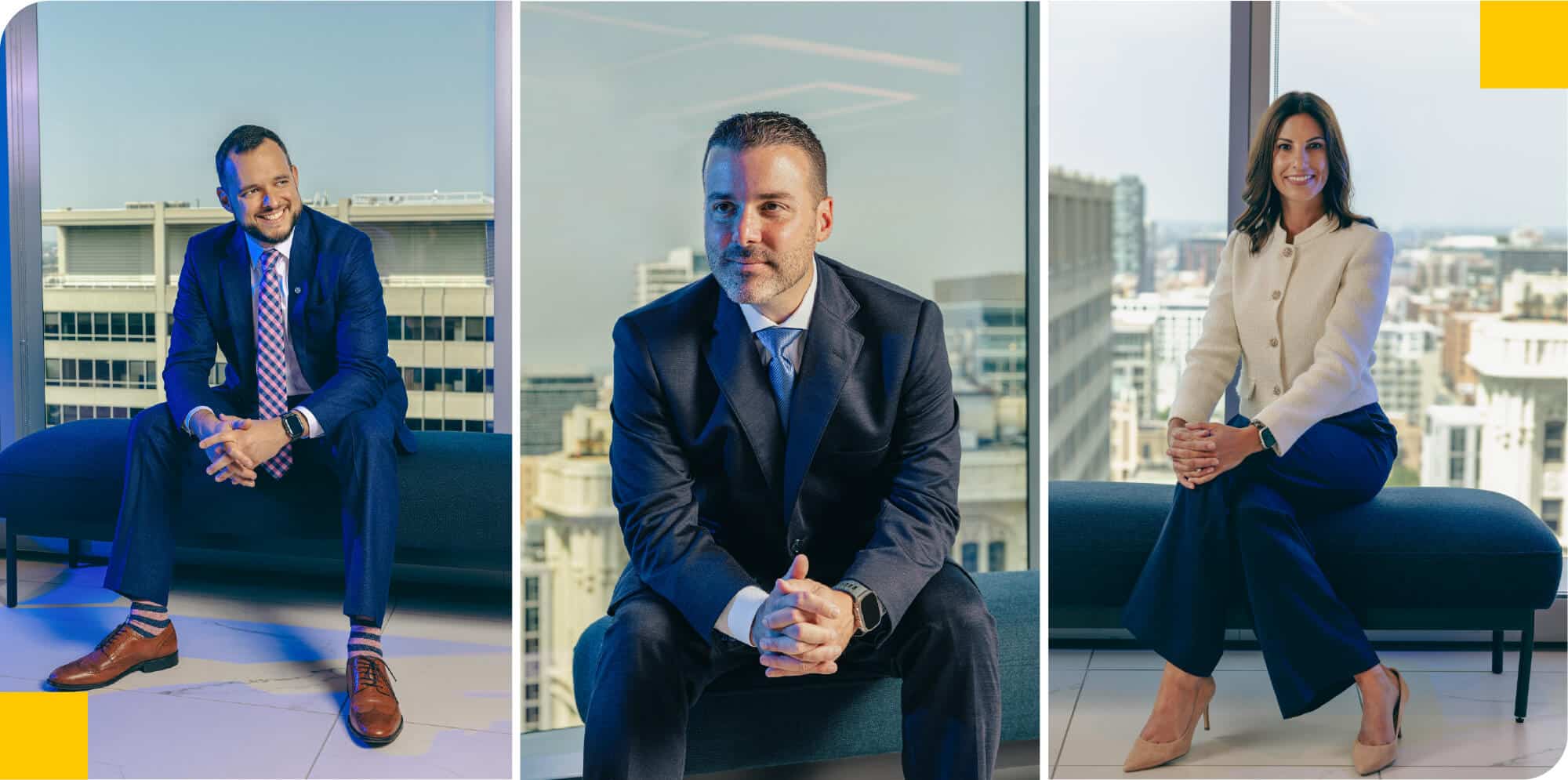
Catherine Blaesing
The managing director of BMO Capital Markets has been part of the organization for more than two decades. Throughout her tenure, Blaesing has had the opportunity to work across multiple operating groups, projects, and cross-functional teams. She has spent equal time in capital markets, commercial banking, and risk. She returned, full circle, to capital markets in 2023.
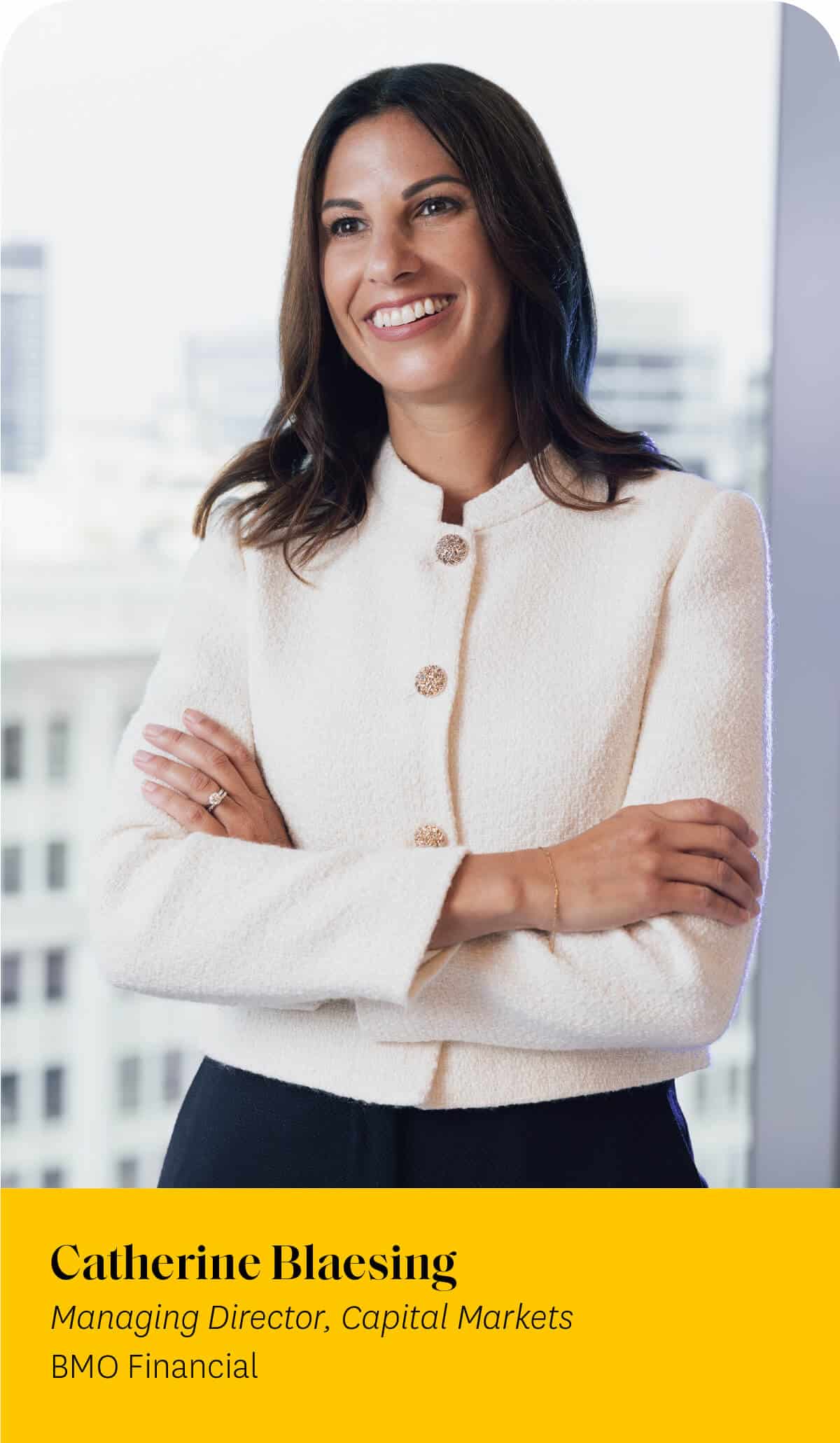
Blaesing currently heads up BMO’s diversified industries group, which includes about fifty bankers spread throughout the US and Canada. The managing director is also the interim head of the financial institutions group within BMO’s corporate banking function, encapsulating another sixty-odd bankers throughout North America.
In her role, Blaesing says talent development and mentorship are two of her primary mandates.
“I want to ensure that we have the talent and that talent is being plugged into the right places,” Blaesing explains. “When I think of my own career, I’ve benefited greatly from great sponsors and mentors. They have given me different opportunities and at-bats for different kinds of visibility. I spend a lot of time with my team working to understand where they want to go and what experiences I can help them get on their way there.”
Michael Miranda
The head of investments for North American wealth management, Miranda is the relative newbie to BMO Financial with only seven years of service. But the executive has been in the industry for more than twenty-five years, all of those at Chicago-based asset or wealth managers. What sets Miranda apart, though, is the fact that his career has traversed different aspects of the investment world.
Miranda spent time managing alternative portfolios for institutional clients globally, and since coming to BMO, he’s led investment business for BMO’s family office, took over clients with ultra-high net worth, and now tackles what is a newly created and expanded role at BMO.
“BMO has historically had wonderful capabilities on the investment side in the US and Canada,” Miranda explains. “But over the last few months, we’ve brought those teams closer together to figure out how we can deliver best-in-class solutions for our clients across North America.”
Miranda is leading that research, strategy, and thought leadership for a huge swath of BMO’s North American wealth management interests.
![“[Latinos are] a huge minority that is growing at an exponential rate. How do we become the bank of choice for Latino-owned businesses? I think we’re making a strong case for ourselves.” Michael Miranda BMO Financial](https://hispanicexecutive.com/wp-content/uploads/2024/09/HE_DE_BMO-Harris_Miranda-Quote.jpg)
Edward Suarez
The regional president of the Plains Region at BMO has only had two employers during his career. Edward Suarez began at BMO in 2013 as a vice president and hub branch manager. Suarez was born and raised in Cuba, but his family immigrated to Philadelphia, where Suarez was able to start a new life. Suarez has admittedly done “just about any job that exists at the branch level,” but for the past few months, the executive is now overseeing the branch network for the Great Plains states and is relocating from Chicago to Minnesota soon.

“I’ve sat behind the service line, I’ve been a banker, I’ve been an assistant manager, and I’ve been a bank manager,” Suarez explains. “I’ve moved around an awful lot, from Philadelphia to Wisconsin, from Florida to Illinois. I’ve been part of this organization since 2013, and I think that says something about this place.”
Today, Suarez leads a team of more than five hundred people. The leader says he is passionate about elevating his staff and mentoring them to become the next generation of leaders. Suarez has benefited greatly from leaders who saw his own drive and proactively mentored him, helped him “sand down” some of his edges, and allowed him to become the leader they knew he could be.
The Culture Capper
“I’ve been here for the shortest amount of time, but that also means I’ve had the pleasure of being at a few firms around town,” Miranda says. “They’ve all been great in their own right, but BMO sets itself apart because of its culture. Our purpose, to ‘boldly grow the goodin business and life,’ is a perfect representation of what this place does internally as well.”
Miranda says it’s the perfect alignment with its clients and its people. The purpose, the passion, and the execution are what makes it a different kind of organization. Miranda says the aspirational growth objectives and BMO’s well-documented commitment to its community resonates with its clients just much as it does with its internal employees.
Suarez says he was initially lured to BMO by a mentor who told him that he would be pleased with the culture because his mentor knew Suarez liked being around other people who truly care about what they do.
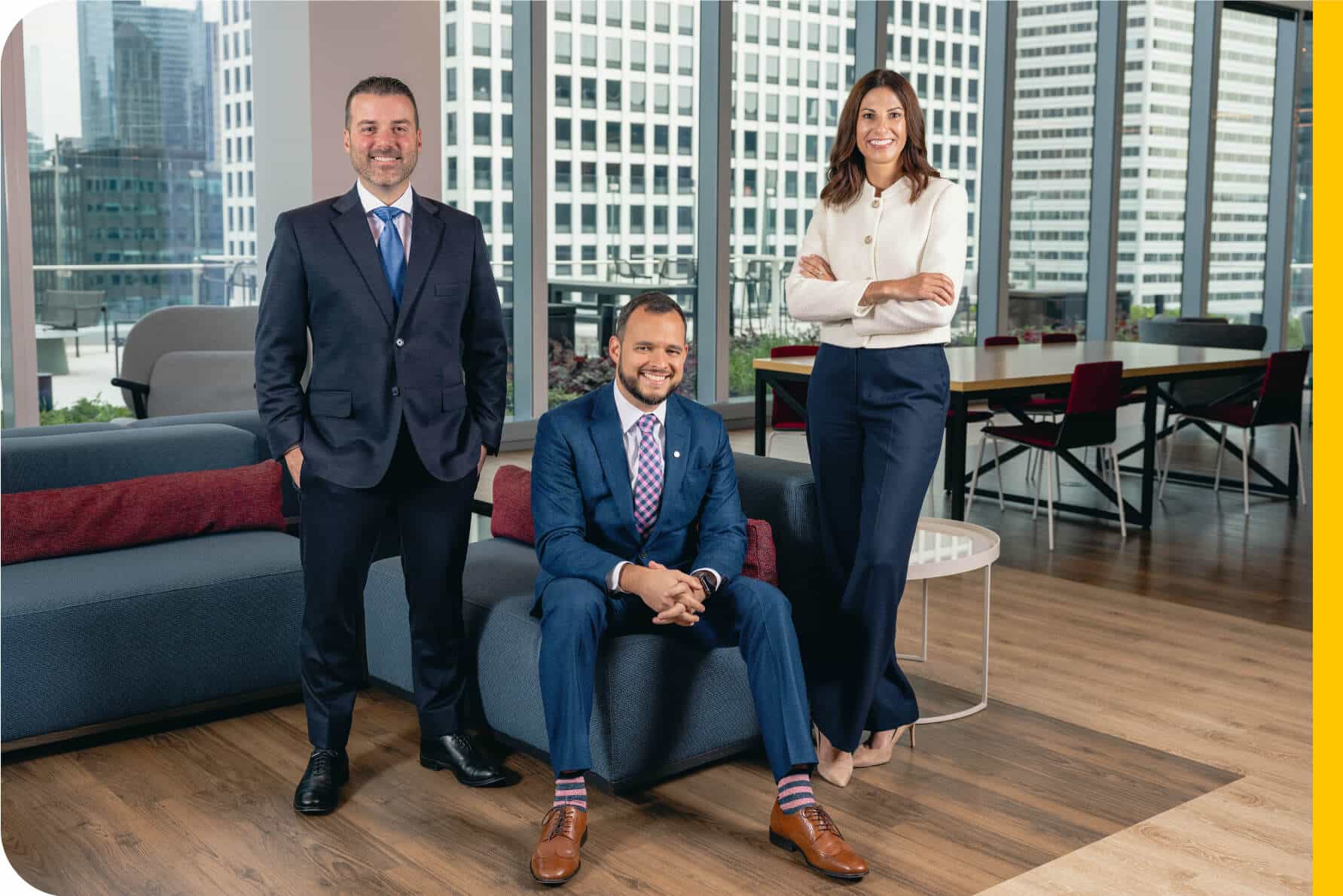
“When I got here, I realized that I could call anybody in the company and they would pick up the phone and talk with you,” Suarez explains. “If you ask them for time or mentorship, they are happy to do it. There is such a culture of care that starts with our clients, but it’s also such a significant part of the people you’re around every day.”
Blaesing adds that, in short, having a high-performing culture doesn’t come at the expense of being a good person.
“And I think that shines through to our clients,” Blaesing says. “We serve so many different communities and cultures, and every step of the way, you just see how the culture here sets us up so well to be stewards to our community.”
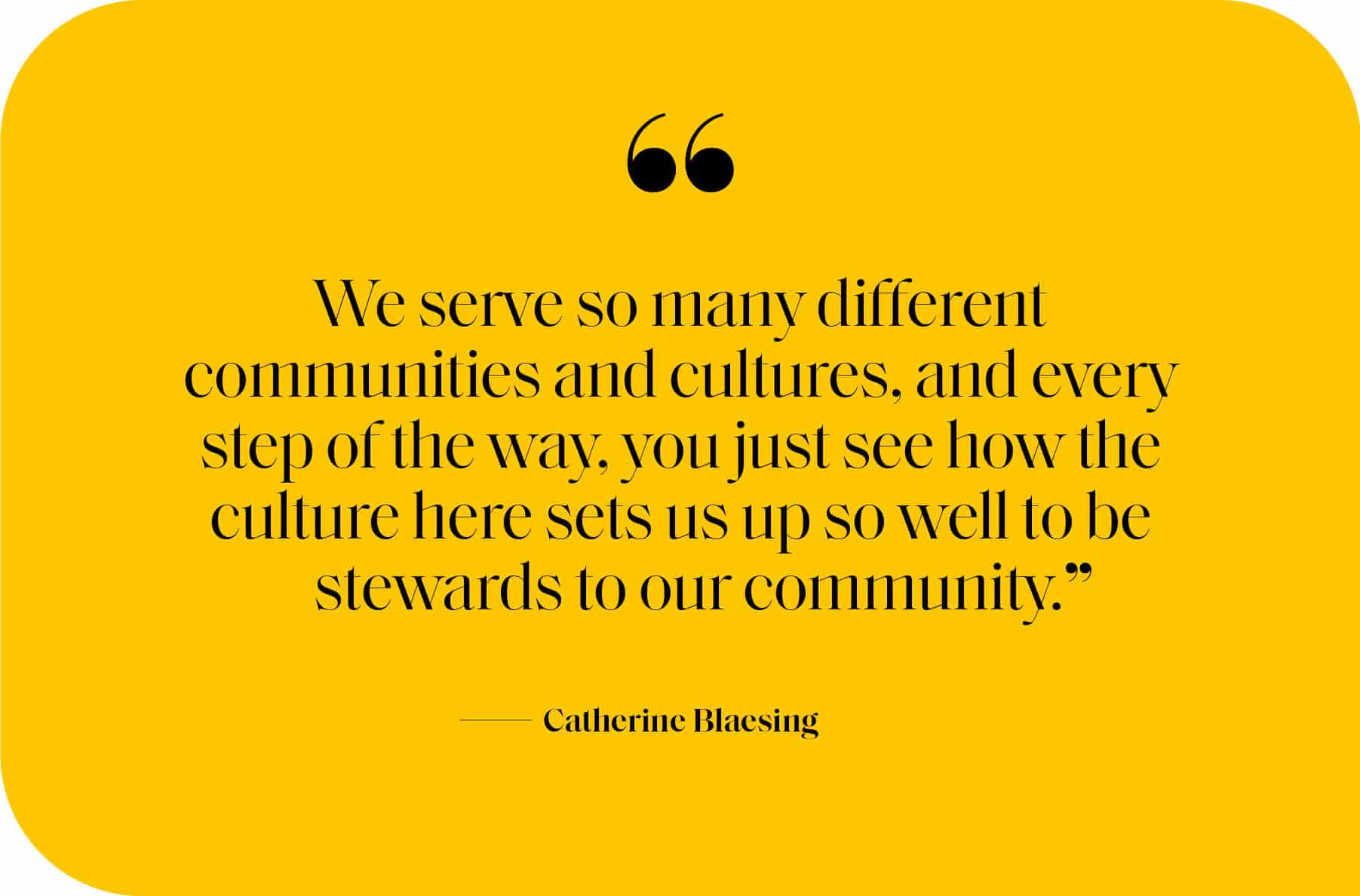
Serving the Latino Community
That community includes the fast-growing Latino segment of BMO’s business, a focus Suarez has helped home in on recently. At the branch level, Suarez says he’s excited that BMO Financial understands that Latinos are simply not a demographic they can grow without serving better.
“[Latinos are at] $3.2 trillion of the GDP today,” Suarez says. “It’s literally doubled in the last decade alone. And I’m going to throw some stats at you right now because I helped build part of the strategy here. Fifty-eight percent of the Latino community is under thirty-four years old. Over a quarter of them make over $100,000 a year. There are so many misconceptions around this space that I think banks are unfortunately playing into. I love that BMO has managed to identify what a growing space this is, and we’ve built a massive strategy to target it.”
Suarez says his organization is ensuring that staffing at branches includes appropriate numbers of Spanish speakers, but, in reality, the vast majority (around 70 percent) of Latinos speak English fluently. He notes that growing a Latino-focused strategy requires dispelling a lot of the myths that may be raised by those unfamiliar with the realities of the Latino experience in the US.
Times have changed, and so have Latinos.
Miranda’s focus may be different, but it’s still a vital part of better serving Latinos. He points to the 2023 launch of BMO’s index of the largest Latino-owned companies in the US. This year, BMO Financial expanded that list to five hundred. Miranda says this is a reflection of not only the size and contributions of Latinos to the US economy, but also BMO’s commitment to raising awareness of who those businesses are and what they mean, broadly, to the national economy.
Personally, Miranda has had the chance to connect with dozens of Latino business owners across North America. BMO hosts nationwide events that Miranda attends and organically connects with Latinos who are helping create jobs and generational wealth.
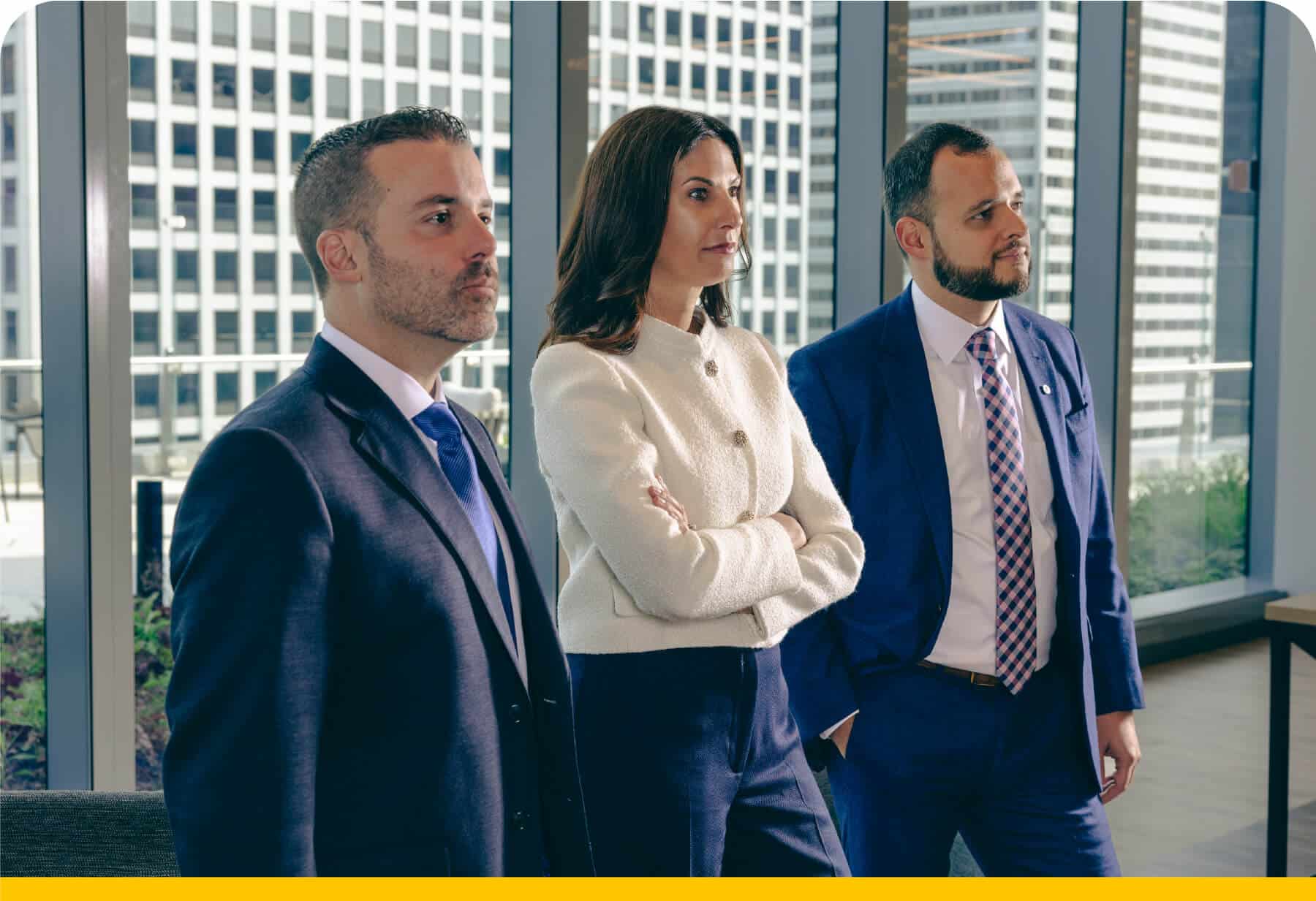
“As a wealth leader here and an individual who leads investments, I love that journey,” Miranda explains. “We’re a huge minority that is growing at an exponential rate. How do we become the bank of choice for Latino-owned businesses? I think we’re making a strong case for ourselves.”
Blaesing helped build out the bank’s investment in commercial banking in South Florida and has been an advocate for BMO’s Empower initiative. Empower is a five-year, more than $40 billion commitment to “breaking down the barriers that prevent businesses from accessing financial services.” Empower is making investments that address gaps in wealth, education, healthcare, and job creation. The initiative also pledged $30 million in capital to support a diverse range of companies across the US and Canada.
“It’s so important to focus not just on our client base, but to ensure that our bankers and leaders across the firm reflect just how diverse the populations we serve are,” Blaesing says.
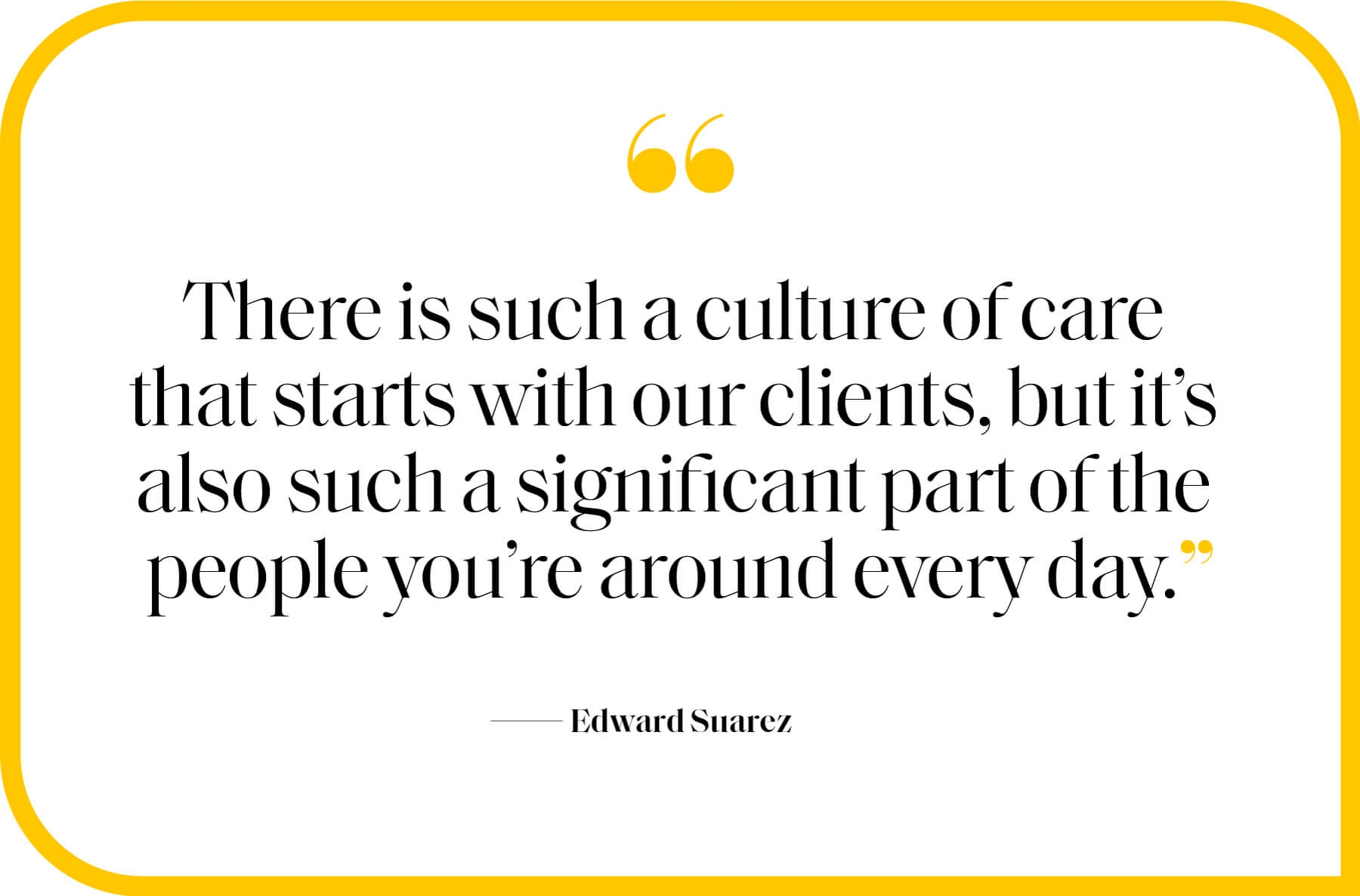
The Change Is Apparent
When Blaesing began her career at BMO, the makeup of those stakeholders was markedly different than it is today. The managing director says she’s watched her own organization transform and become more reflective of the communities it serves. Blaesing says attracting diverse talent has always been relatively easy for BMO, but its increased focus on retention, training, and leadership development is helping propel that talent to higher levels in the organization.
“It’s just good business,” Blaesing says. “We all bring diverse backgrounds and experiences to the clients we serve. Our clients are diverse. I think BMO has done a fantastic job of talent development, succession planning, and cultivating leaders across the organization.”
Miranda has served on the senior leadership council for the Association of Latino Professionals for America, among other organizations, and says that he saw firsthand the passion that was driving efforts to seek out and develop more diverse talent at BMO.
“I think if you objectively look at what BMO’s accomplished over the last decade, you’ll see this is an incredibly special place,” Miranda says.
Suarez says he’s never struggled to find mentorship at BMO, and now he’s able to act as a mentor himself as a board member for talent management in BMO’s Latino Alliance employee resource group.
“I think it’s important to call out that we create forums here proactively that help people who are looking to move up in the organization and are career-driven,” Suarez says. “So, I know what the other two have said to be very true because I see it. I’ve experienced it with my team. It’s just special.”
The three are ambitious, successful, yet explicitly focused on being mechanisms of change for others. Perhaps these three just happened to wind up at BMO, but still, the culture that has kept them, trained them, and allowed them to be as effective as their present titles reflect is something special.
BMO Financial is not just attracting talent like these three. It’s growing that talent in-house and allowing it to thrive.
